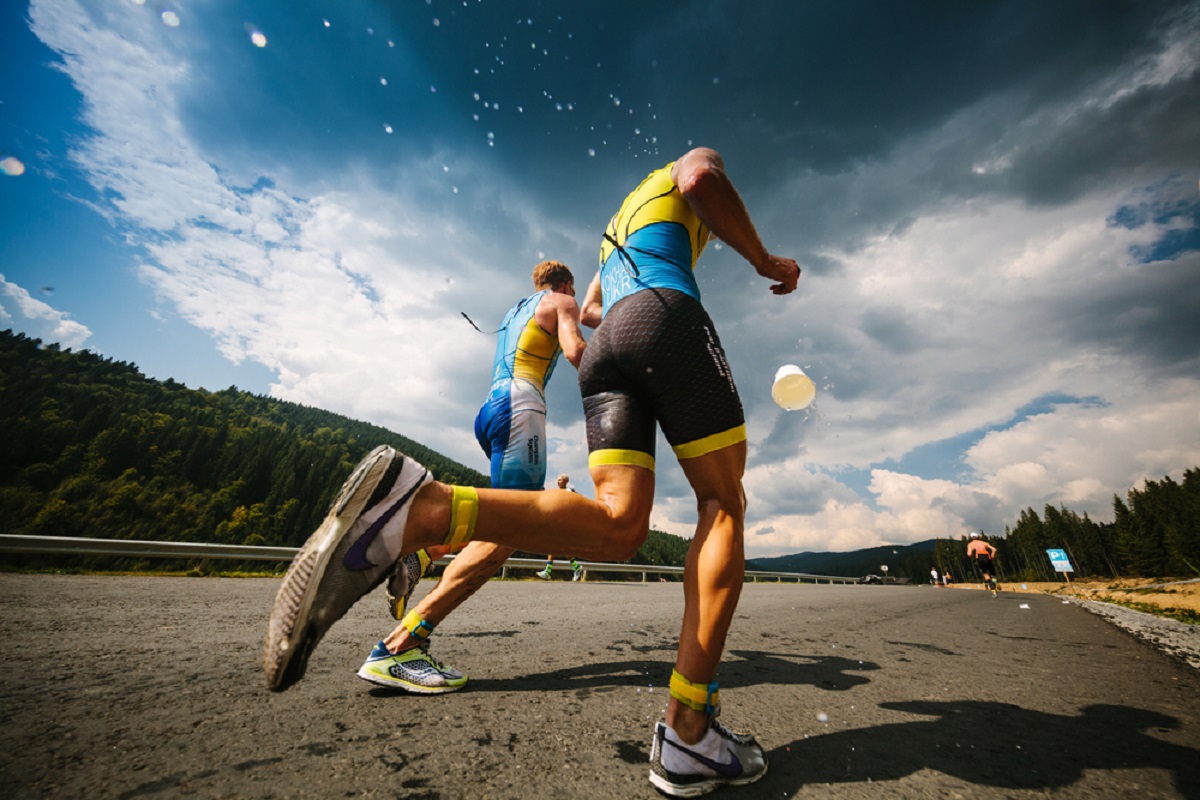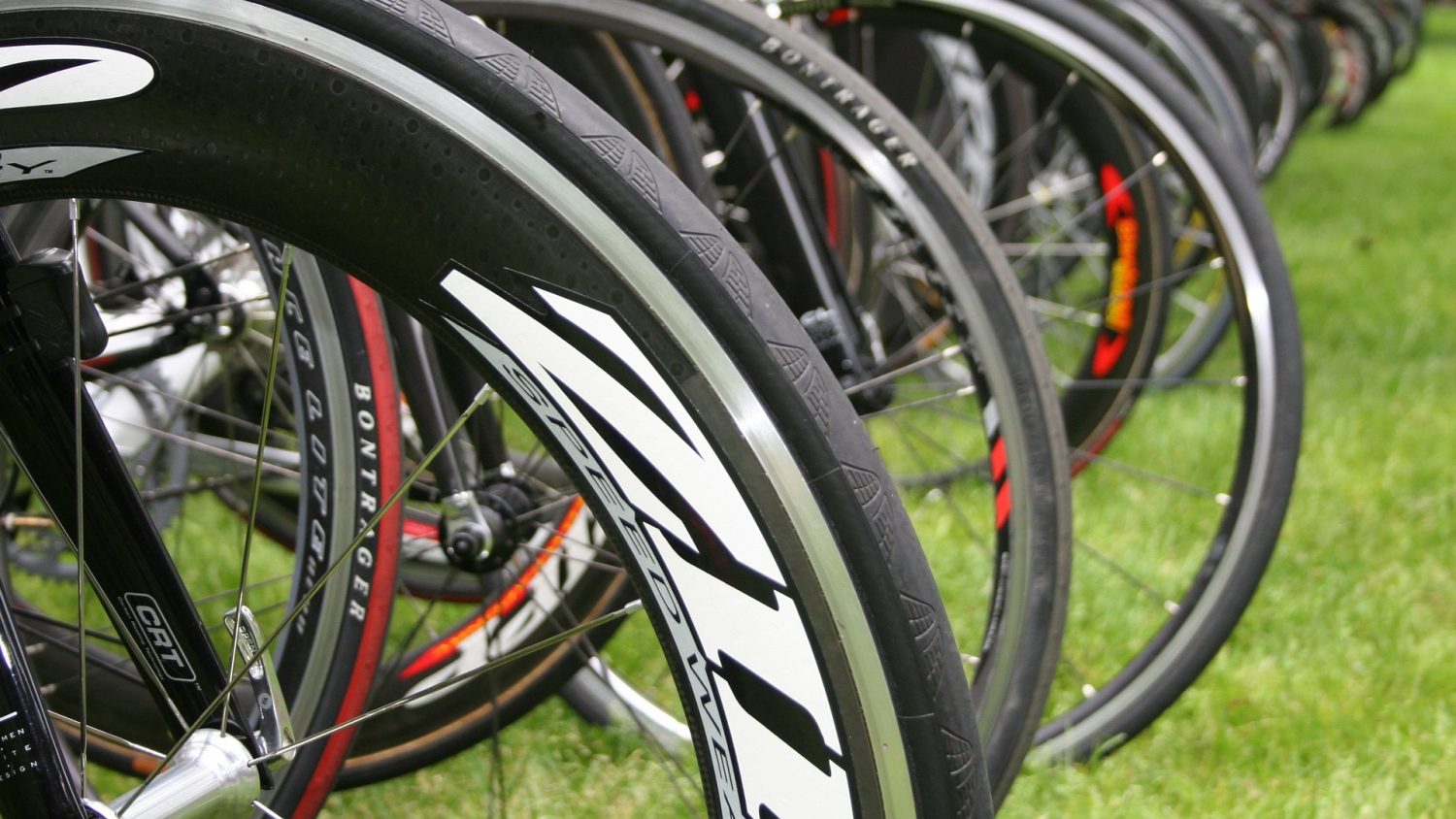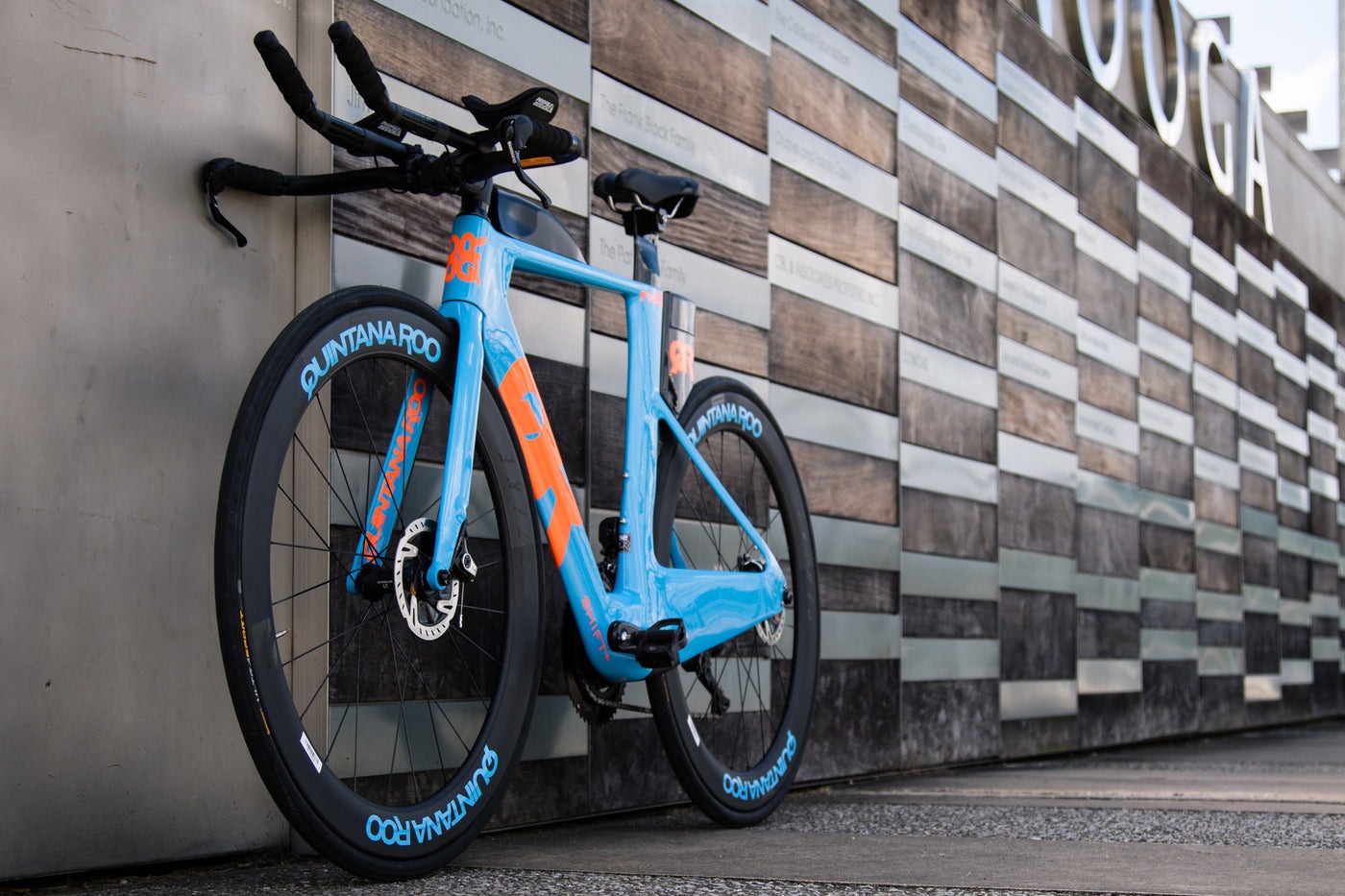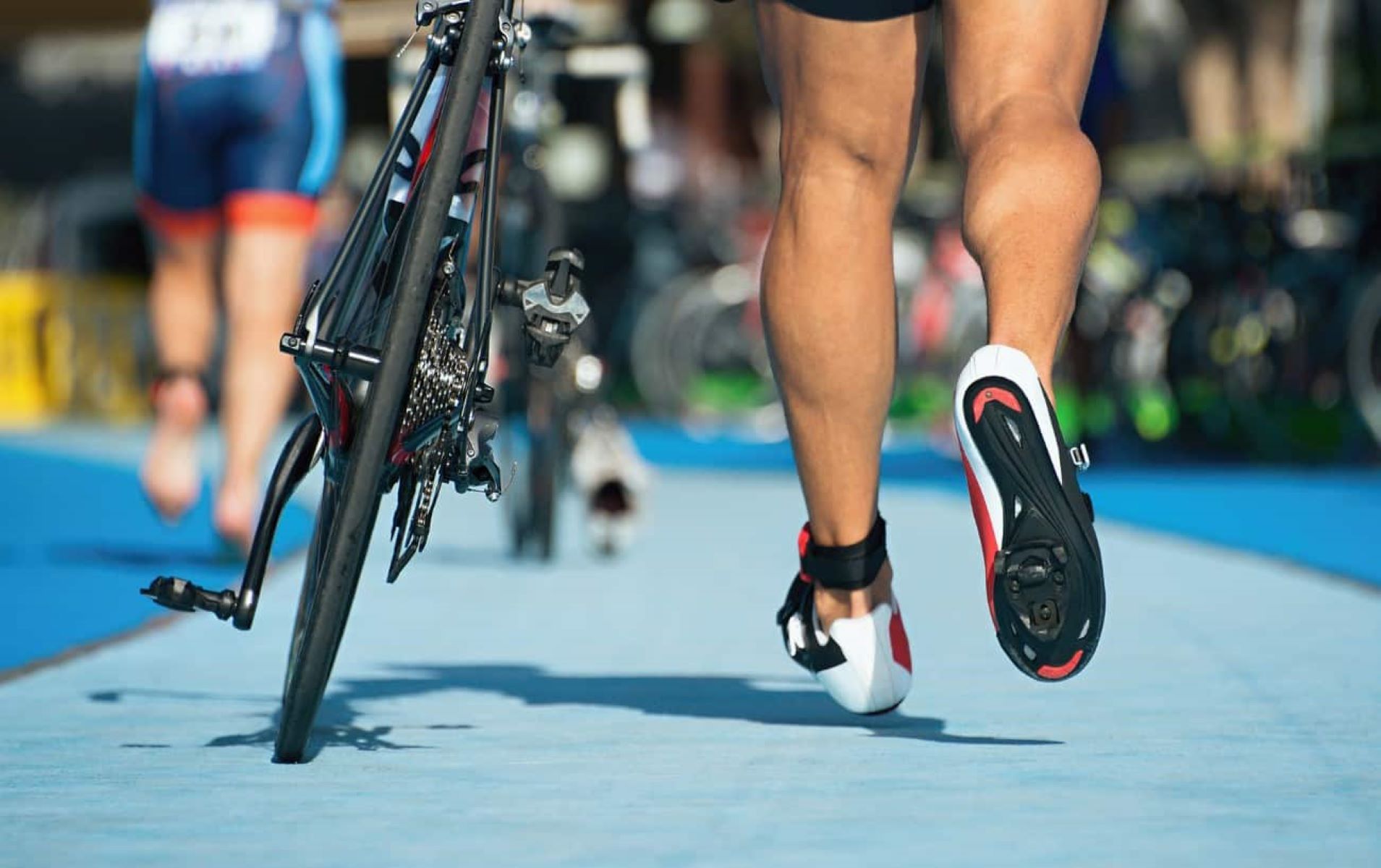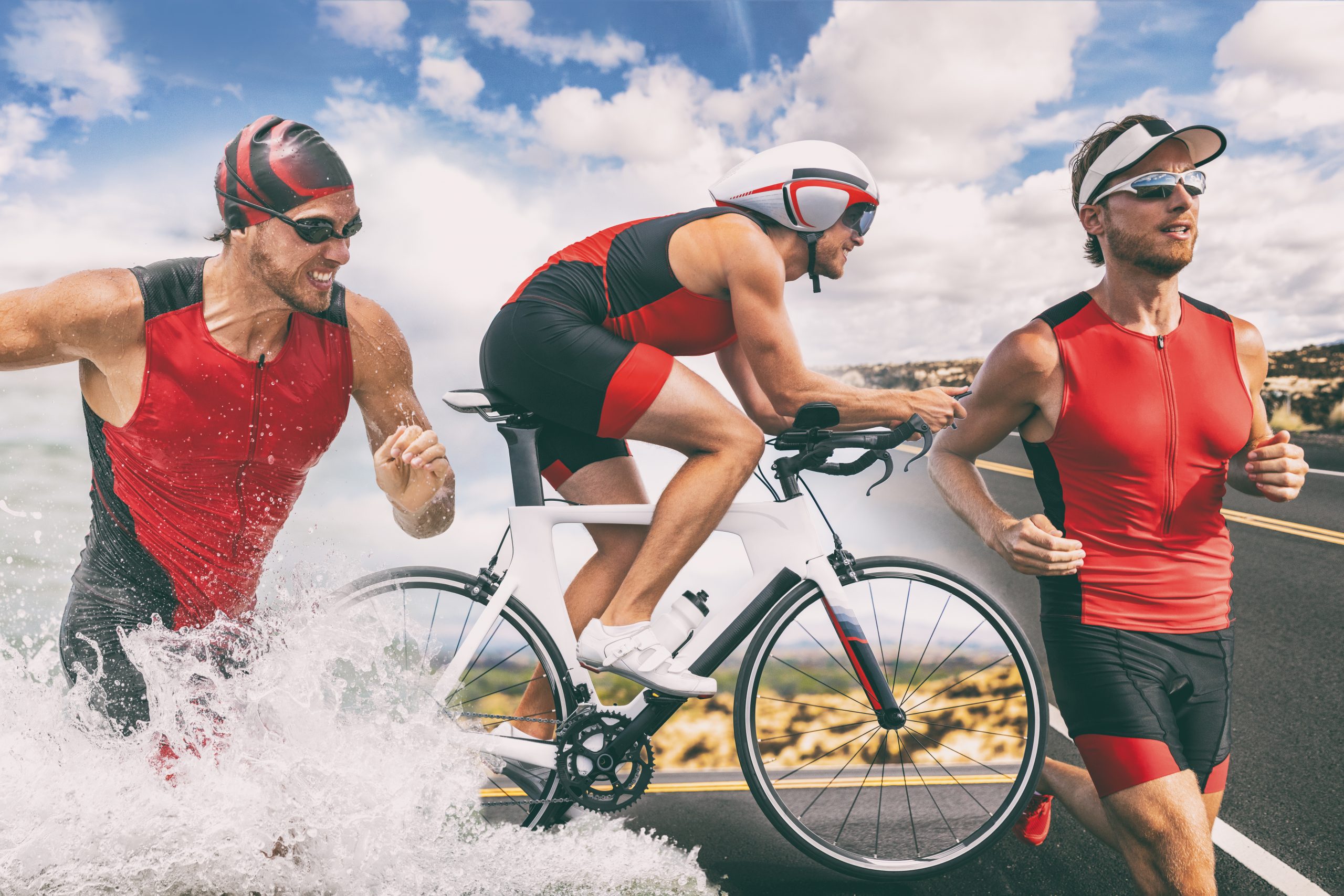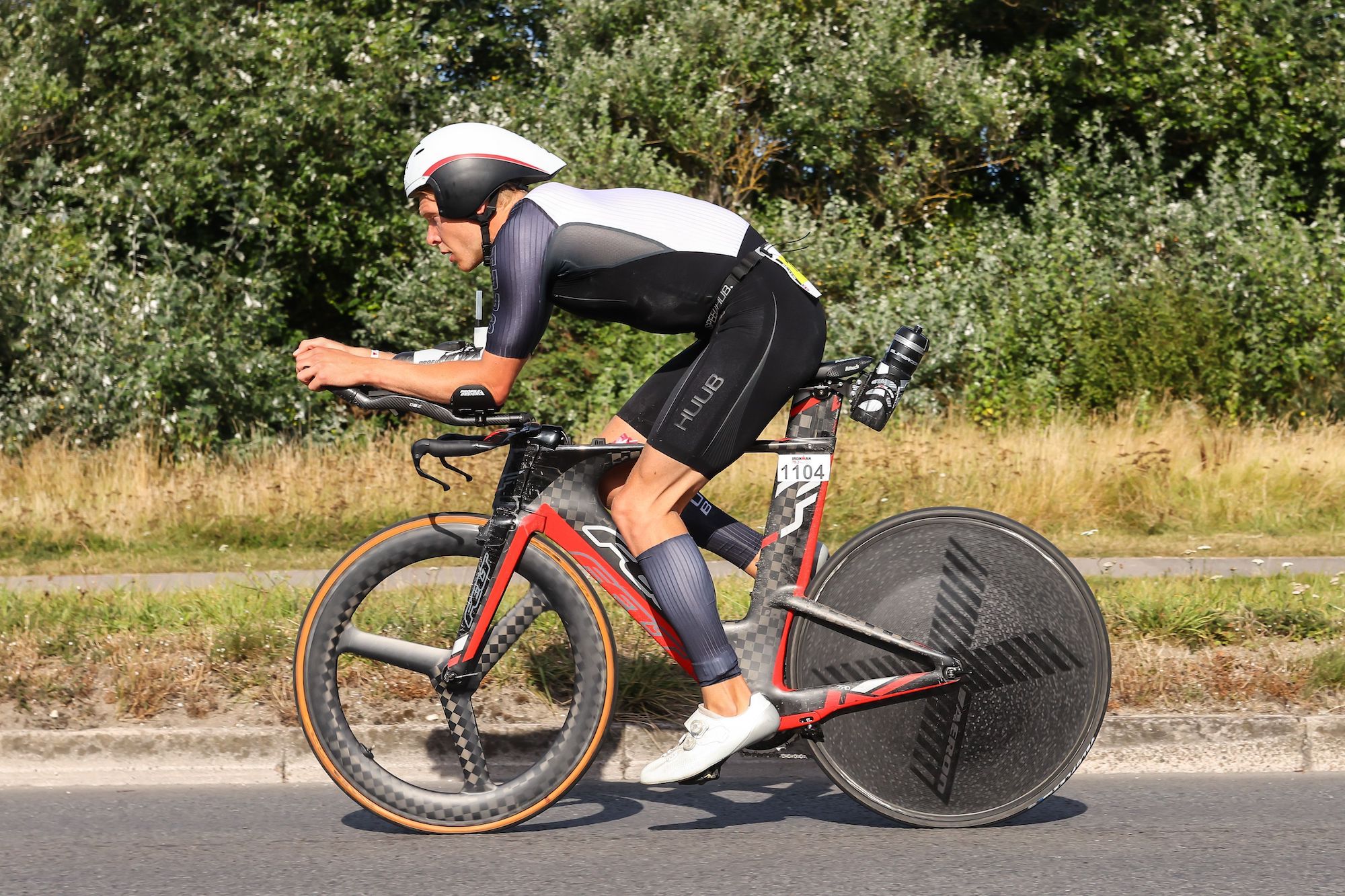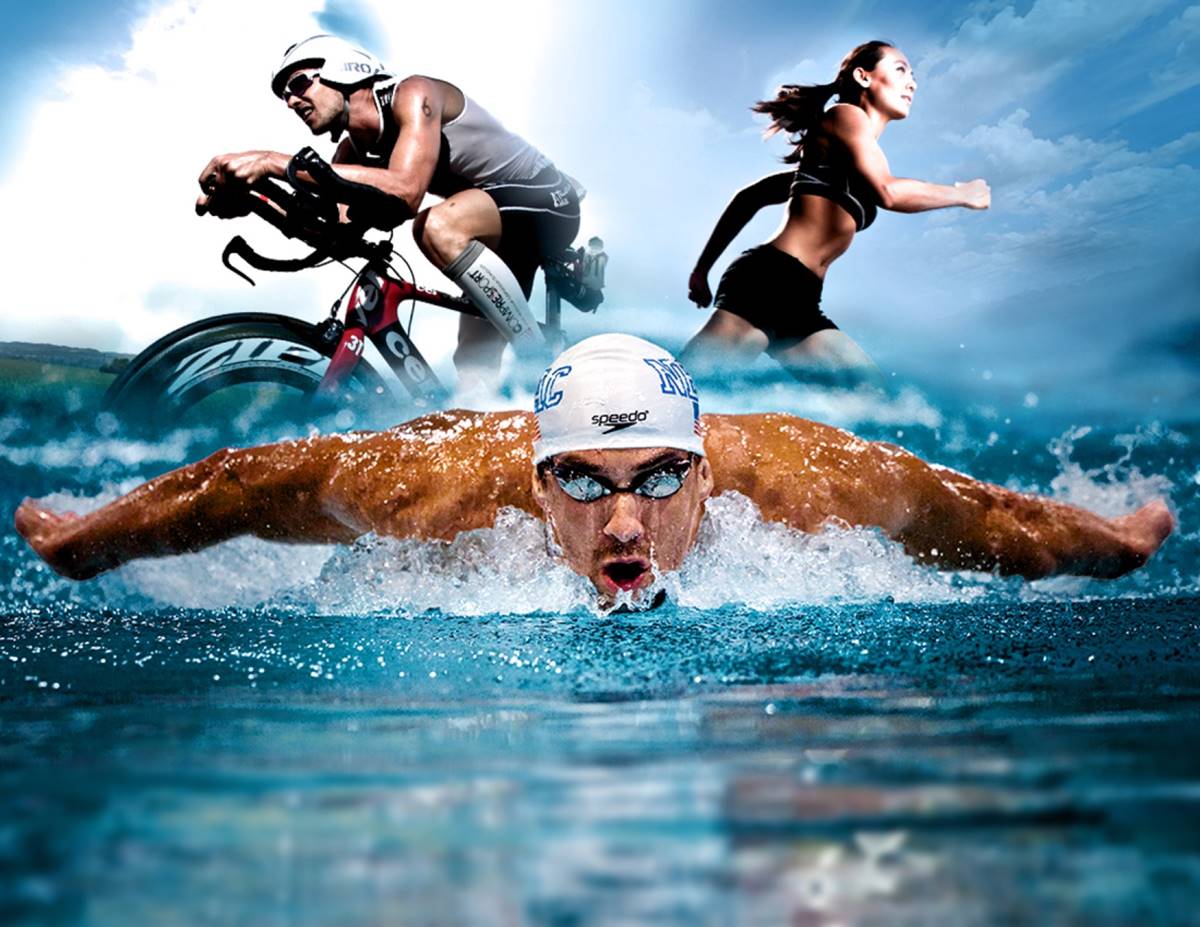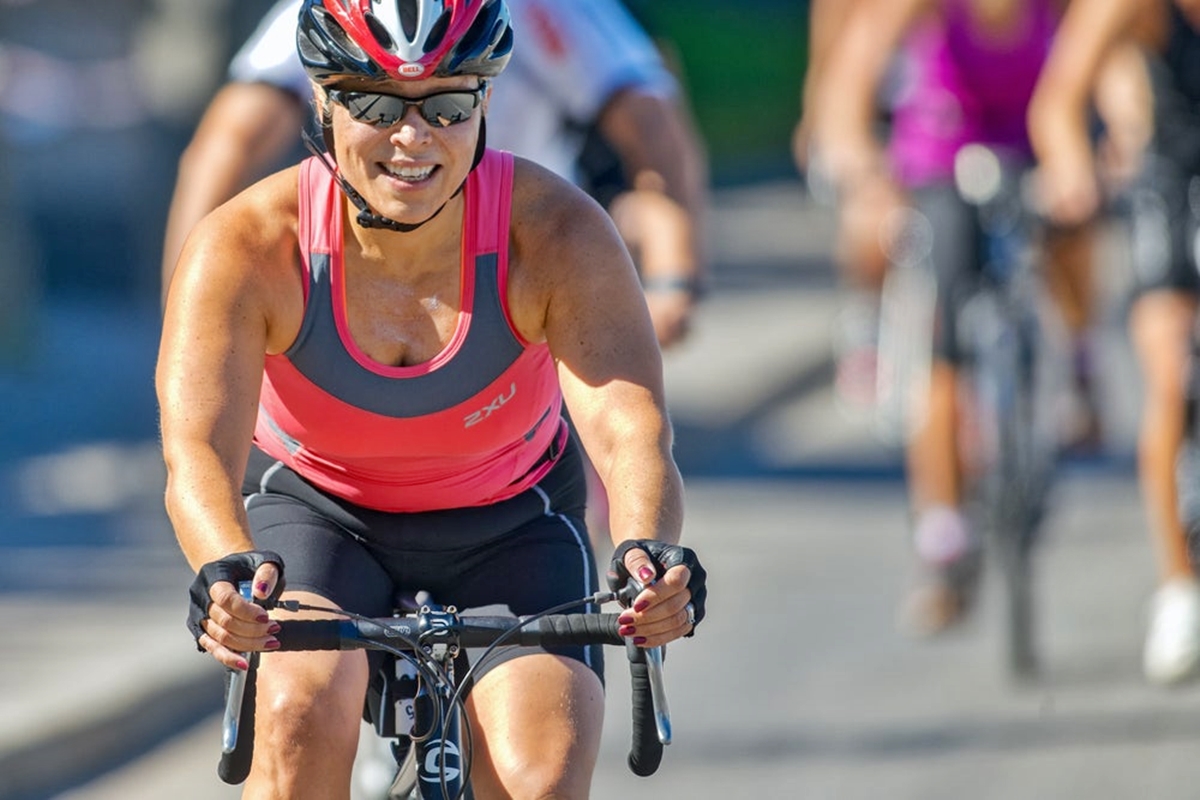Home>Misc>Featured>What Makes A Triathlon Bike Different From A Road Bike?
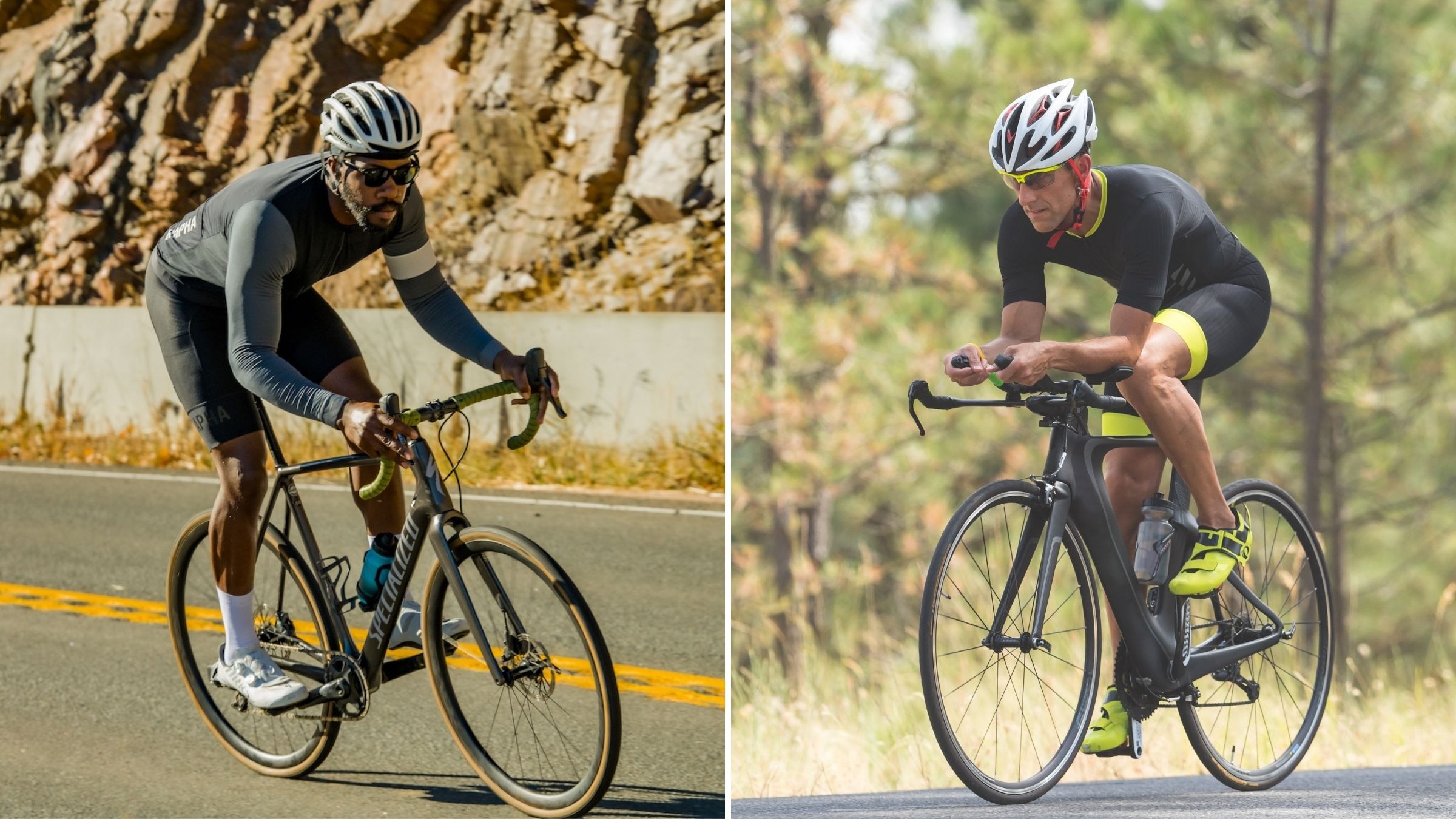

Featured
What Makes A Triathlon Bike Different From A Road Bike?
Modified: August 19, 2023
Discover the key differences between a featured triathlon bike and a road bike, and how they impact your performance on raceday.
Introduction
Triathlon and road cycling are two popular disciplines that require specific equipment to optimize performance and enhance endurance. While both sports involve cycling, there are distinct differences between the types of bikes used. Understanding these differences is essential for athletes looking to excel in the multisport world of triathlon.
In this article, we will explore the unique characteristics that set a triathlon bike apart from a road bike. From frame geometry to aerodynamics, components to wheels and tires, and even specialized features, we will delve into the specifics of what makes a triathlon bike the preferred choice for triathletes.
Triathlon bikes are specifically designed to meet the demands of the sport, which combines swimming, cycling, and running in a single race. While a road bike is versatile and suitable for various terrains and riding styles, a triathlon bike is highly optimized for speed and efficiency on flat surfaces.
By understanding the key differences between a triathlon bike and a road bike, athletes can make informed decisions when choosing the appropriate equipment for their specific race goals. So, let’s dive in and explore the fascinating world of triathlon bikes!
Frame Geometry
The frame geometry of a triathlon bike is one of the most significant differentiating factors from a road bike. Triathlon bikes are designed with a more aggressive and aerodynamic position in mind, prioritizing speed over comfort. This geometry allows triathletes to maintain a streamlined position while conserving energy for the other disciplines.
Compared to a road bike, a triathlon bike typically features a steeper seat tube angle, bringing the rider further forward and over the cranks. This forward positioning helps engage the powerful glute muscles, allowing for more efficient pedaling and maximizing power output.
Additionally, triathlon bikes often have a longer top tube and a shorter head tube, resulting in a more stretched-out and aerodynamic riding position. This positioning not only reduces wind resistance but also improves the bike’s stability at higher speeds.
Furthermore, triathlon bikes may have a steeper head tube angle, allowing for sharper and more responsive handling. This is crucial for making quick turns during race situations or when maneuvering through tight corners on the course.
It’s important to note that the aggressive geometry of a triathlon bike may not be suitable for everyone. Riders with limited flexibility or those who prioritize comfort over speed may find a road bike’s more relaxed geometry more suitable for their needs.
In summary, the frame geometry of a triathlon bike is optimized for aerodynamics and speed. Its aggressive position enhances pedaling efficiency, reduces wind resistance, and improves handling for swift turns and maneuvers during the race.
Aerodynamics
Aerodynamics is a critical factor in the design of a triathlon bike. Triathletes aim to minimize wind resistance and maximize their speed, and the aerodynamic features of a triathlon bike play a significant role in achieving this goal.
One of the key features that enhance aerodynamics is the shape of the frame tubes. Triathlon bikes often have narrower and more teardrop-shaped tubes compared to road bikes. This streamlined design helps reduce drag by allowing the air to flow more smoothly around the frame.
In addition to the frame shape, triathlon bikes also feature specific components that improve aerodynamics. Integrated handlebars, also known as aerobars, allow riders to assume a more aerodynamic position by placing their hands in a narrow position close together. This minimizes the frontal area, reducing wind resistance and optimizing speed.
Aerodynamic seatposts are another feature found on many triathlon bikes. These seatposts are designed to minimize turbulence and drag caused by air passing over them. By reducing the aerodynamic drag in this area, triathletes can maintain a more efficient and streamlined position throughout the race.
Furthermore, triathlon bikes often have aero-shaped carbon fiber forks that help reduce drag. The shape of the fork blades allows for smoother airflow around this area, further enhancing the bike’s aerodynamic performance.
It’s worth mentioning that while these aerodynamic features can be advantageous in reducing drag, they may not always provide the most comfortable ride. Triathletes should find a balance between aerodynamics and comfort, as discomfort over long distances can hinder performance.
In summary, aerodynamics play a crucial role in triathlon bike design. From the shape of the frame tubes to integrated handlebars and aero seatposts, every aspect of the bike is carefully engineered to minimize drag and maximize speed, allowing triathletes to shave off precious seconds in their race.
Components
The components on a triathlon bike are carefully selected to optimize performance, efficiency, and durability. While there are similarities with road bike components, there are also notable differences that cater to the specific demands of triathlon races.
One of the most significant differences is the choice of gear shifting systems. Triathlon bikes often utilize bar-end shifters or integrated shifters located on the aerobars. This placement allows triathletes to change gears without having to move their hands from an aerodynamic position, ensuring minimal disruption to their speed and efficiency.
Another crucial component is the crankset. Triathlon bikes typically have larger chainrings, also known as “big rings,” to provide a wider gear range and accommodate higher speeds on flat surfaces. This allows triathletes to maintain a consistent and efficient cadence throughout the race.
Brake levers on a triathlon bike are often integrated into the aerobars, allowing triathletes to access the brakes without having to change their hand position. This seamless integration ensures quick and efficient braking when necessary, without sacrificing the aerodynamic advantage.
Saddles on triathlon bikes are designed with a more aggressive forward tilt, which helps the rider maintain an aerodynamic position while in the saddle. The padding and shape of the saddle are also optimized for comfort and stability during long-distance rides.
Additionally, triathlon bikes may feature dual water bottle mounts to provide hydration options during the race. These mounts are strategically placed for easy access without affecting the bike’s aerodynamics.
It’s important to note that the choice of components on a triathlon bike can vary depending on the rider’s preferences, budget, and specific race requirements. Nevertheless, all components are selected with the goal of maximizing performance, efficiency, and comfort during the demanding triathlon events.
In summary, the components on a triathlon bike are tailored to meet the specific needs of a triathlete. From the shifters to the cranksets, brakes, and saddles, each component is chosen to enhance performance and ensure optimal efficiency during the race.
Wheels and Tires
The choice of wheels and tires on a triathlon bike can greatly impact speed, handling, and overall performance. Triathletes require a setup that provides both aerodynamic efficiency and reliability on various road surfaces encountered during the race.
Triathlon bike wheels are typically designed for speed and aerodynamics. They are often deep-section carbon fiber rims that are specifically engineered to reduce drag and improve airflow around the wheel. The deep rim profile helps to minimize turbulent air at higher speeds, allowing triathletes to maintain their momentum with less effort.
Another aspect of triathlon bike wheels is the choice of tire size. Triathletes often opt for narrower tires, usually ranging between 23mm and 25mm in width. These narrower tires have lower rolling resistance, providing increased speed on flat surfaces, while still offering sufficient grip for cornering.
Tubular tires, which are glued to the wheel rim, are commonly used in triathlon races due to their lightweight nature and improved aerodynamics. While tubular tires can be more challenging to repair in case of punctures, the performance benefits outweigh the potential inconvenience for many triathletes.
In recent years, tubeless tire setups have also gained popularity among triathletes. Tubeless tires offer lower rolling resistance, increased puncture resistance, and the ability to run lower tire pressures for improved comfort without sacrificing performance.
It’s worth noting that wheel choice can vary depending on the specific race course and conditions. Triathletes may opt for different wheel depths or even choose to use a disc wheel at the rear for maximum aerodynamic advantage on flat and non-windy courses.
Overall, the choice of wheels and tires on a triathlon bike is crucial in maximizing speed and efficiency while maintaining reliability. The combination of aerodynamic rims, narrow tires, and the choice between tubular or tubeless setups allows triathletes to carve through the air and conquer the race course with confidence.
Brakes
Braking is a critical aspect of any bike, and triathlon bikes are no exception. While triathletes prioritize speed and aerodynamics, they cannot compromise on safety and control. Therefore, the braking system on a triathlon bike is specially designed to provide efficient and reliable stopping power.
Triathlon bikes typically feature lightweight dual-pivot rim brakes. These brakes offer solid and responsive braking performance while keeping the overall weight of the bike to a minimum. The placement of the brake calipers and the ability to position them close to the rims ensures optimal leverage, allowing for quick and precise braking when necessary.
One important consideration in regards to brakes on a triathlon bike is the integration of the brake levers with the aerobars. This allows the rider to access the brakes without needing to change their hand position. The brake levers are strategically positioned on the ends of the aerobars, providing easy and efficient braking while maintaining an aerodynamic position.
In recent years, some triathlon bikes have started incorporating disc brakes. Disc brakes offer enhanced stopping power and increased modulation, providing riders with greater control in various weather conditions. The addition of disc brakes also allows for the use of wider rims and tires, providing increased comfort and improved traction.
While disc brakes offer compelling advantages, it’s essential to consider the added weight and potential aerodynamic disadvantages they may introduce. Furthermore, disc brakes require specific features, such as disc-compatible frames and forks, which may limit the choice of bike models.
Brake choice on a triathlon bike ultimately depends on the rider’s preferences, the specific race conditions, and the level of importance placed on factors such as braking power, weight, and aerodynamics.
In summary, the braking system on a triathlon bike is engineered to provide efficient and reliable stopping power while considering the aerodynamic needs of the rider. Dual-pivot rim brakes and disc brakes both offer advantages in terms of performance and control, allowing triathletes to confidently navigate the race course.
Gear Range
The gear range of a triathlon bike plays a crucial role in optimizing performance for both flat sections and hilly terrain. Triathlon races often involve a combination of flat roads, rolling hills, and occasional steep climbs, making an appropriate gear range essential for efficient pedaling and maintaining speed.
Triathlon bikes are typically equipped with larger chainrings for the front crankset, allowing for higher gear ratios. This enables triathletes to maintain a fast and efficient cadence on flat or downhill sections, where maintaining speed is paramount.
On the rear cassette, a wide range of gears is also crucial to accommodate the varying terrain encountered during a triathlon race. Triathlon bikes often feature cassettes with a wider range of sprockets, allowing for lower gears that assist in climbing steeper inclines without sacrificing speed on flat sections.
The gear ratios on a triathlon bike are carefully selected to provide a balance between efficient power transfer and optimal speed. Having the appropriate gear range allows triathletes to spin at an efficient cadence throughout the race, preventing premature fatigue and maximizing energy for the other disciplines.
It’s important for triathletes to consider their fitness level, course profile, and personal preferences when selecting the gear range for their triathlon bike. Some athletes may prioritize a wider range of gears to tackle challenging climbs, while others may prefer a narrower range to focus on speed on flatter sections. The goal is to find the right balance that suits individual racing needs.
In summary, the gear range of a triathlon bike is carefully designed to accommodate both flat and hilly terrain encountered during a race. The combination of larger chainrings in the front and wider range cassettes in the rear provides triathletes with the optimal gear ratios for efficient pedaling, speed, and performance.
Triathlon-Specific Features
Triathlon-specific bikes often come equipped with additional features that cater specifically to the needs of triathletes. These features aim to enhance performance, convenience, and efficiency during the race.
One notable feature is the inclusion of integrated hydration systems. Triathlon bikes often have water bottle holders, specifically designed to accommodate aerodynamically optimized water bottles. These bottles are positioned in easily accessible locations, such as between the aerobars or mounted behind the saddle. This ensures that triathletes can stay hydrated without compromising their aerodynamic position or having to reach for bottles mounted on traditional water bottle cages.
Another important feature is the addition of storage options. Triathlon bikes come equipped with various storage compartments, such as top tube bags, bento boxes, and saddle bags. These storage solutions allow triathletes to carry essential race supplies, such as energy gels, spare tubes, tools, and nutrition, without the need for additional storage equipment. This provides convenience and accessibility during the race, reducing the need for frequent stops to access items from external storage sources.
Triathlon bikes often feature adjustable aerobars. These allow triathletes to fine-tune their riding position by adjusting the height, width, and angle of the aerobars. This customization ensures that each rider can find their optimal aerodynamic position, maximizing efficiency, and minimizing fatigue over long distances.
Integrated electronic shifting systems are another common feature found in triathlon bikes. These advanced shifting systems offer precise and reliable gear changes at the touch of a button, allowing triathletes to quickly and effortlessly transition between gears without interrupting their cadence or hand position. The seamless shifting provided by electronic systems ensures smooth gear changes, minimizing any potential performance disruptions during the race.
Triathlon bikes may also include additional mounting options for accessories, such as bike computers, GPS devices, or lights. These mounting points are strategically placed to minimize any negative impact on the bike’s aerodynamics while providing triathletes with convenient access to vital race information or safety equipment.
In summary, triathlon-specific bikes are designed with features that enhance performance, convenience, and efficiency for the triathlete. From integrated hydration systems and storage options to adjustable aerobars and electronic shifting, these features cater to the unique needs of triathletes, allowing them to streamline their race experience and focus on reaching their performance goals.
Conclusion
Understanding the differences between a triathlon bike and a road bike is crucial for triathletes looking to maximize their performance in this multi-discipline sport. From frame geometry to aerodynamics, components, wheels and tires, brakes, gear range, and triathlon-specific features, each aspect plays a vital role in determining the efficiency and speed of a triathlon bike.
The frame geometry of a triathlon bike is optimized for aerodynamics and pedaling efficiency. Its aggressive positioning allows triathletes to maintain a streamlined position while conserving energy for the other disciplines.
Aerodynamics are a key focus in the design of a triathlon bike. Streamlined frame tubes, integrated handlebars, and aerodynamic seatposts all work together to reduce drag and improve performance.
The components on a triathlon bike are carefully selected to optimize performance, efficiency, and durability. From gear shifting systems to cranksets, brakes, and saddles, each component contributes to the overall performance of the bike.
Wheels and tires on a triathlon bike are designed to maximize speed, reduce rolling resistance, and provide reliable traction on various road surfaces encountered during the race.
Brakes on a triathlon bike are engineered to provide efficient stopping power while allowing for seamless integration with the aerobars, ensuring minimal disruption to the aerodynamic advantage.
The gear range of a triathlon bike is specifically tailored to accommodate the demands of both flat and hilly terrain, allowing for efficient pedaling and maintaining speed throughout the race.
Lastly, triathlon-specific features such as integrated hydration systems, storage compartments, adjustable aerobars, and electronic shifting systems are designed to enhance convenience and performance for triathletes during the race.
By understanding and harnessing the unique features of a triathlon bike, athletes can optimize their performance, increase speed, and maximize efficiency during the demanding triathlon events. Whether competing in a sprint, Olympic, or Ironman distance triathlon, choosing the right triathlon bike can make a significant difference in achieving personal bests and reaching the podium.
